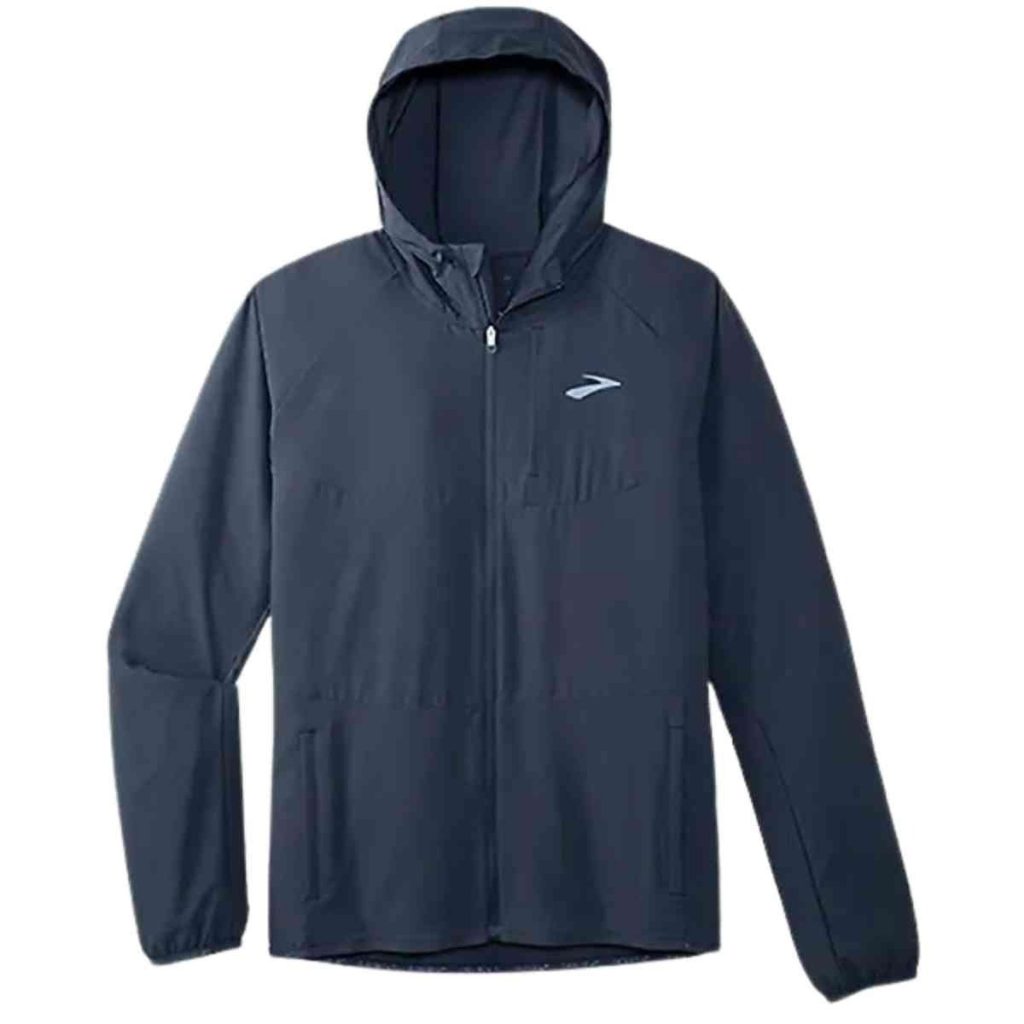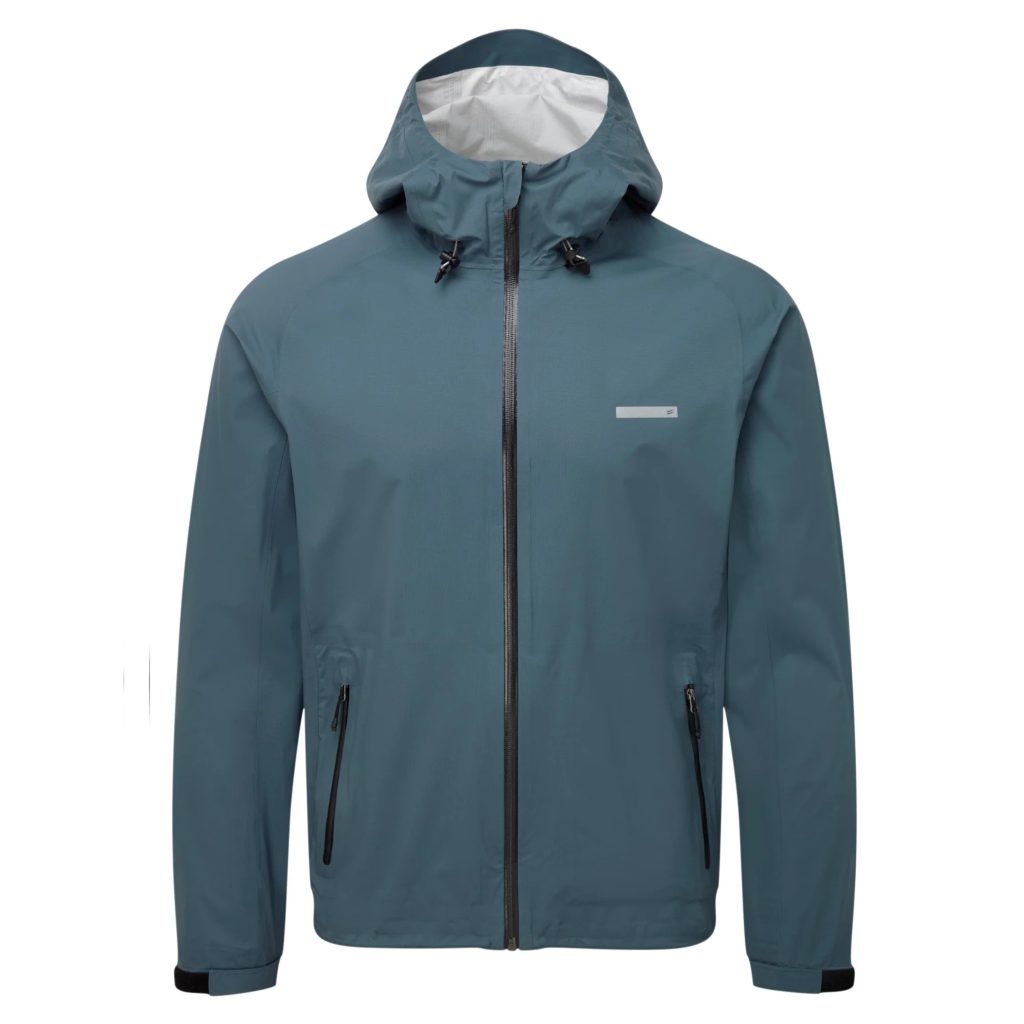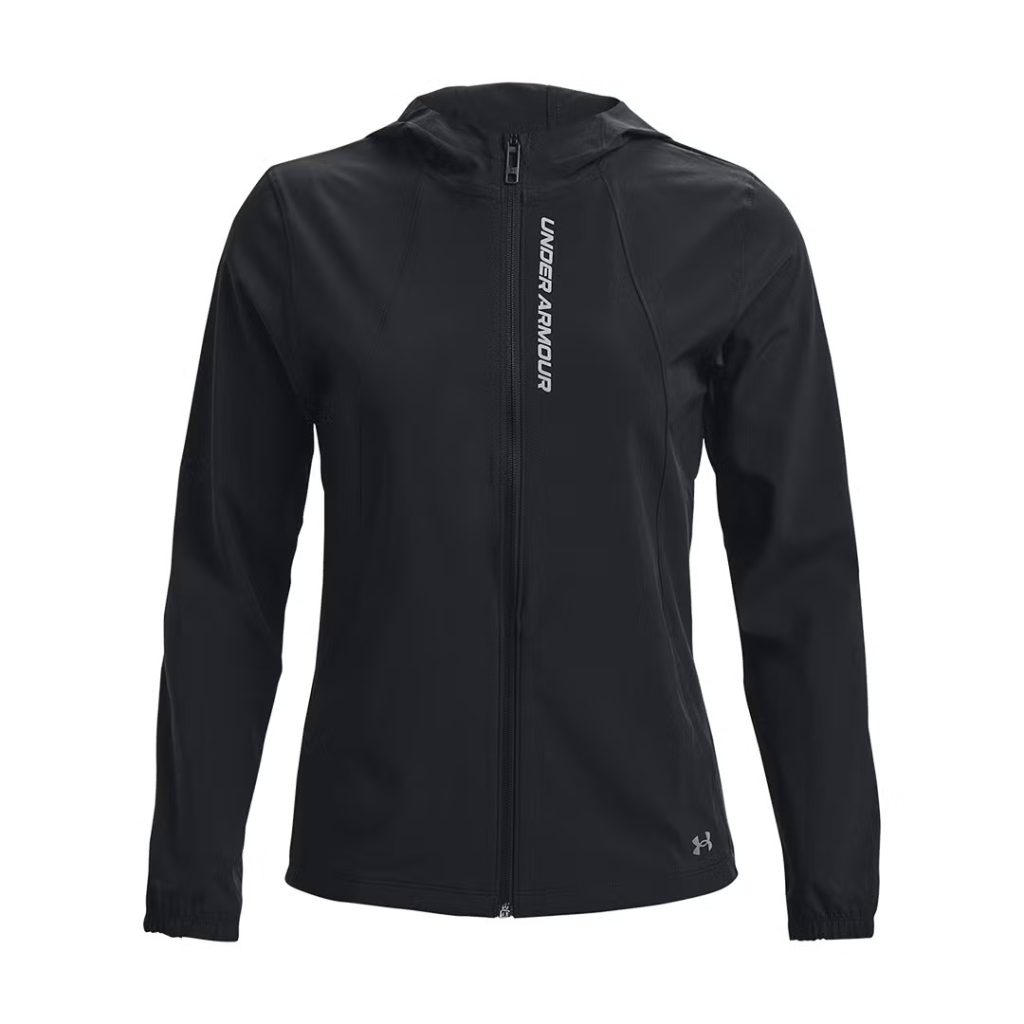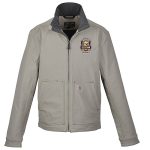Key Features to Look for in a Waterproof Running Jacket
When choosing the best waterproof running jacket, certain features are essential. Here are key points to consider:

- Water Resistance: The jacket should have high water resistance to keep you dry in all weather conditions.
- Seam Sealing: Look for taped or welded seams. These prevent water from seeping through stitch lines.
- Hood Design: A good hood should protect your head without restricting vision or movement.
- Adjustable Features: Cuffs, hems, and hoods that adjust can help you achieve a custom fit.
- Pockets: Waterproof or zippered pockets are great for keeping personal items secure and dry.
- Ventilation: Jackets with underarm vents or breathable fabric panels help manage body heat.
- Reflective Details: For runners who train in low light, reflective elements are critical for safety.
Selecting the right jacket includes balancing these features with your specific needs and preferences. Aim for a jacket that combines functionality and comfort, without compromising on style.
How to Determine the Right Fit for Your Waterproof Running Jacket
Finding the best waterproof running jacket also means ensuring it fits correctly. A jacket that’s too tight restricts movement and may not give you the full range of motion needed for running. Conversely, one that’s too loose can act like a sail, catching the wind and slowing you down. Here’s a quick guide to determining the right fit:
- Measure Yourself: Before shopping, measure your chest, waist, hips, and arm length. Use sizing charts provided by brands as a reference.
- Try It On: If possible, try on the jacket. Make sure there’s room for layering but not too much excess fabric.
- Check the Sleeves: Sleeves should cover your wrists, but not extend past your hands. They should also allow for easy arm movement.
- Test the Zippers: Zip up the jacket fully. It should be comfortable around your neck and not too tight across your chest.
- Move Around: Do some running motions. Ensure that the jacket doesn’t ride up or restrict your movement anywhere.
The best waterproof running jacket will feel comfortable whether you’re standing still or in motion, and remember to consider the jacket’s fit both with and without additional layers underneath.
The Importance of Breathability in Waterproof Jackets
When it comes to selecting a waterproof running jacket, keeping dry is undoubtedly a top priority. However, an equally critical factor that often goes overlooked is breathability. A jacket that fails to allow moisture vapor to escape can leave you feeling clammy, uncomfortable, and even chilled due to trapped sweat. This is why breathability is a key consideration when choosing a high-performance running jacket. Let’s explore why breathability matters and how it impacts your comfort and performance during runs.
Preventing Sweat Build-Up
a. The Science of Sweat
During physical activity, your body naturally produces sweat as a cooling mechanism. As sweat evaporates from your skin, it helps regulate your body temperature. However, if your jacket doesn’t allow this moisture to escape, it gets trapped inside, soaking your clothing and leaving you feeling damp.
- Consequences of Poor Breathability:
- Wet layers against your skin increase discomfort.
- Excess moisture can cause chafing and irritation, especially during long runs.
- Dampness reduces insulation, making you feel colder in cool or windy conditions.
b. Moisture-Wicking vs. Breathability
While moisture-wicking fabrics pull sweat away from your skin, breathability ensures that the moisture escapes through the fabric to the outside environment. Both functions are essential for maintaining dryness and comfort, but breathability plays a particularly crucial role in waterproof jackets, where the outer layer must block rain while allowing internal moisture to exit.
Maintaining Comfort During Runs
a. Temperature Regulation
Breathable jackets help regulate your body temperature by allowing heat and moisture to escape. Without this feature, your body can overheat, leading to fatigue and reduced performance.
- Cooling Effect: Proper breathability mimics the natural evaporation process, helping you stay cool even during intense workouts.
- Avoiding Overheating: A jacket that traps heat can make you feel suffocated, especially in warmer or humid conditions.
b. Reducing Discomfort
Running in a non-breathable jacket can quickly become unbearable. Trapped sweat creates a sticky, clammy sensation that distracts from your focus and enjoyment. Breathability ensures that you remain comfortable, allowing you to concentrate on your run rather than your soggy clothing.
Enhancing Performance
a. Staying Lightweight
A breathable jacket prevents excessive moisture buildup, which can add unnecessary weight to your clothing. Wet fabric feels heavier and restricts movement, hindering your ability to perform at your best.
b. Preventing Chills
After a workout, your body temperature drops rapidly. If your jacket retains sweat, the dampness can cause you to feel cold, increasing the risk of hypothermia in cooler weather. Breathable jackets help wick away moisture, keeping you dry and warm post-run.
Balancing Waterproofing and Breathability
a. Innovative Fabric Technologies
Modern waterproof jackets use advanced materials like Gore-Tex, eVent, or Pertex Shield to achieve the perfect balance between waterproofing and breathability. These fabrics feature microporous membranes that allow water vapor (sweat) to escape while blocking liquid water (rain).
- Microporous Membranes: Tiny pores in the fabric are large enough for water vapor to pass through but too small for raindrops to penetrate.
- Hydrophilic Coatings: Some fabrics use hydrophilic (water-attracting) layers to draw moisture outward through diffusion.
b. Ventilation Features
In addition to breathable fabrics, many jackets incorporate design elements to enhance airflow:
- Mesh Panels: Strategically placed mesh underarms or along the back improve ventilation.
- Pit Zips: Underarm zippers allow you to release excess heat quickly.
- Adjustable Vents: Openings with adjustable closures let you control airflow based on your activity level and weather conditions.
Long-Term Benefits
a. Durability
Breathable jackets are often made from high-quality materials designed to withstand frequent use and washing without losing their performance properties. By preventing sweat buildup, these jackets reduce wear and tear caused by constant dampness, extending their lifespan.
b. Hygiene
Excessive sweat trapped inside a non-breathable jacket can lead to unpleasant odors and bacterial growth. Breathable fabrics help keep your jacket fresher for longer, reducing the need for frequent washing and preserving its appearance and functionality.
Choosing the Right Balance
When shopping for a waterproof running jacket, look for products that emphasize both waterproofing and breathability. Key indicators include:
- Breathability Ratings: Measured in grams of water vapor transmitted per square meter per day (g/m²/24h). Higher ratings indicate better breathability.
- Waterproof Ratings: Measured in millimeters (mm) of water pressure the fabric can withstand before leaking. Look for a balance between high waterproofing and sufficient breathability.
- User Reviews: Real-world feedback from runners can provide insights into how well a jacket performs in various conditions.
A waterproof running jacket that prioritizes breathability ensures you stay dry not only from the outside but also from the inside. By allowing sweat to evaporate and heat to escape, breathable jackets enhance comfort, regulate temperature, and support optimal performance. Whether you’re braving a light drizzle or tackling a downpour, investing in a jacket that balances waterproofing with breathability will make all the difference in your running experience. Remember, staying dry isn’t just about keeping rain out—it’s also about letting moisture escape.

Materials and Technologies: What Makes a Jacket Waterproof
The effectiveness of a waterproof running jacket hinges on the advanced materials and technologies used in its construction. These innovations are designed to keep you dry, comfortable, and protected from the elements while maintaining breathability and performance. Understanding the science behind these materials and technologies can help you make an informed decision when choosing the right jacket for your needs. Here’s a closer look at what makes a jacket truly waterproof.
Waterproof Fabrics: The Foundation of Protection
At the core of every waterproof jacket are specialized fabrics engineered to block rain and moisture while allowing internal sweat vapor to escape. These fabrics fall into two main categories: laminates and coated fabrics.
a. Laminated Fabrics
Laminated fabrics consist of multiple layers bonded together to create a durable, high-performance material. The most common laminated fabric is Gore-Tex, but other brands like eVent and Pertex Shield also use similar technology.
- Microporous Membranes: These fabrics feature a thin membrane with microscopic pores that are too small for water droplets to penetrate but large enough for water vapor (sweat) to escape. This ensures waterproofing without sacrificing breathability.
- Layer Construction: Most laminated fabrics have three layers:
- Outer Layer (Face Fabric): A durable, water-resistant shell that protects the membrane.
- Middle Layer (Membrane): The microporous or hydrophilic layer that provides waterproofing and breathability.
- Inner Layer (Lining): A soft, moisture-wicking fabric that enhances comfort against the skin.
b. Coated Fabrics
Coated fabrics are typically more affordable than laminates and involve applying a waterproof coating directly to the fabric. While they are effective, they often lack the durability and breathability of laminated fabrics.
- Polyurethane (PU) Coatings: A common choice, PU coatings provide reliable waterproofing but can be less breathable compared to microporous membranes.
- Durable Water Repellent (DWR) Finish: Many coated fabrics are treated with a DWR coating to enhance water resistance by causing water to bead up and roll off the surface.
Durable Water Repellent (DWR) Coating
A DWR coating is applied to the outer layer of most waterproof jackets to enhance their ability to repel water. This treatment prevents water from soaking into the fabric, ensuring that the jacket remains lightweight and breathable.
- How It Works: DWR causes water droplets to bead up and slide off the surface, reducing the amount of moisture that comes into contact with the fabric.
- Limitations: Over time, DWR coatings can wear off due to abrasion, dirt, or frequent washing. However, they can be reapplied using specialized sprays or wash-in treatments to restore performance.
Seam Sealing: Preventing Leaks
Even the most advanced waterproof fabrics can fail if water seeps through the seams where panels of fabric are stitched together. To address this issue, manufacturers use seam sealing techniques.
- Fully Taped Seams: The highest standard, fully taped seams ensure that every stitch hole is covered with a waterproof tape, preventing leaks.
- Critically Taped Seams: In some jackets, only the seams in high-exposure areas (like shoulders and hoods) are taped, offering a balance between cost and performance.
Seam sealing is a critical feature for jackets designed for heavy rain or prolonged exposure to wet conditions.
Breathability Technologies: Balancing Comfort and Protection
While waterproofing keeps rain out, breathability ensures that internal moisture (sweat) escapes, keeping you dry and comfortable. Several technologies are used to achieve this balance:
a. Microporous Membranes
As mentioned earlier, microporous membranes allow water vapor to pass through while blocking liquid water. These membranes are the backbone of breathable waterproof fabrics.
b. Hydrophilic Membranes
Unlike microporous membranes, hydrophilic membranes attract and transport moisture through diffusion. They rely on temperature and humidity gradients to move sweat outward.
c. Ventilation Features
In addition to fabric technology, many jackets incorporate design elements to enhance breathability:
- Pit Zips: Underarm zippers allow you to release excess heat quickly during intense activity.
- Mesh Panels: Strategically placed mesh improves airflow without compromising waterproofing.
- Adjustable Vents: Openings with adjustable closures let you control ventilation based on your activity level and weather conditions.
Advanced Materials: Pushing the Boundaries
Innovations in fabric technology continue to push the boundaries of what waterproof jackets can achieve. Some cutting-edge materials include:
a. eVent
eVent is known for its direct venting technology, which allows air and moisture to pass through the membrane without needing additional layers. This results in superior breathability compared to traditional laminates.
b. Pertex Shield
Pertex Shield combines lightweight construction with excellent waterproofing and breathability, making it ideal for runners who prioritize packability and performance.
c. Bio-Based and Sustainable Fabrics
Eco-friendly options are becoming increasingly popular, with brands developing waterproof fabrics made from recycled materials or bio-based polymers. These innovations reduce environmental impact while maintaining high performance.
Additional Features: Enhancing Functionality
Beyond materials and technologies, several design features contribute to a jacket’s overall waterproof performance:
a. Adjustable Hoods
Hoods with drawstrings or toggles can be cinched to prevent water from entering while maintaining visibility.
b. Storm Flaps
Storm flaps cover zippers to prevent water from seeping through openings.
c. Water-Resistant Zippers
Zippers treated with water-resistant coatings or covered by protective flaps add an extra layer of protection.
d. Packability
Many modern waterproof jackets are designed to fold into their own pocket, making them easy to carry when not in use.
The secret behind the best waterproof running jackets lies in the combination of advanced materials, innovative technologies, and thoughtful design. From microporous membranes and DWR coatings to seam sealing and breathability-enhancing features, these elements work together to keep you dry, comfortable, and protected in any weather. By understanding the science behind these innovations, you can choose a jacket that meets your specific needs and ensures peak performance during your runs. Whether you’re braving a drizzle or facing a downpour, investing in a jacket built with cutting-edge materials and technologies will make all the difference in your outdoor experience.
Top Brands for Waterproof Running Jackets
When you’re in the market for the best waterproof running jacket, branding can be important. Top sports apparel brands often provide quality that justifies their reputation. They offer jackets that combine the latest technology with durable materials. Here are some leading brands to consider:
- The North Face: This brand is renowned for outdoor gear. Its jackets are known for durability and high performance.
- Patagonia: Focused on sustainability, Patagonia offers high-quality waterproof jackets with environmental conscience.
- Nike: A giant in sportswear, Nike’s running jackets are stylish and functional with various levels of waterproofing and breathability.
- Adidas: With a focus on innovation, Adidas running jackets often feature reflective technology and a comfortable fit.
- Columbia: Columbia products are praised for their patented technologies, such as Omni-Tech, which provide excellent waterproofing and breathability.
Each of these brands has a distinctive approach to creating the best waterproof running jacket. They consider runners’ needs, from weather resistance to breathability and mobility. Researching and trying on jackets from these top brands can help you find the perfect fit for your needs.

Care and Maintenance of Your Waterproof Running Jacket
To keep your best waterproof running jacket in top condition, proper care and maintenance are crucial. Here are steps you should follow:
- Read Labels Carefully: Always check the care label inside your jacket for specific instructions.
- Wash Gently: Use a mild detergent and wash on a gentle cycle. Avoid fabric softeners, as they can damage the waterproof coating.
- Rinse Thoroughly: Make sure all soap residue is rinsed out, as this can affect the jacket’s breathability.
- Air Dry: Hang your jacket to dry. Avoid high heat from dryers, which can harm the waterproofing.
- Reapply DWR: Over time, the durable water repellent treatment will wear off. You’ll need to reapply it following the manufacturer’s guidelines.
- Regular Inspection: Look for any signs of wear or damage, especially after heavy use, and fix small issues before they become big problems.
By taking these steps, you ensure your waterproof running jacket remains effective and lasts longer. Remember, a little care goes a long way in preserving the function and aesthetic of your running gear.
Price vs. Performance: Finding Value in Waterproof Running Jacket
When hunting for the best waterproof running jacket, price and performance must balance. It’s tempting to go for the cheapest option, yet poor quality might lead to regrets. Conversely, the most expensive jackets may have premium features that you’ll never use. Here’s how you can find value in your purchase:
- Set a Budget: Decide how much you’re willing to spend before starting your search.
- List Must-Have Features: Determine which features from our key points are non-negotiable for you.
- Compare Brands: Look at what different brands offer within your budget range.
- Read Reviews: What do other runners say about the jacket’s durability and performance?
- Assess Longevity: A jacket that’s slightly pricier but lasts longer offers better value over time.
- Look for Sales: Sometimes high-end jackets are available at a discount, adding to their value.
Remember, the goal is to find a jacket that meets your needs at the best price. Spending more on quality can save money in the long run, as a durable jacket won’t need frequent replacement. On the other hand, if you run occasionally, a less expensive jacket with essential features might be enough.

Waterproof Running Jacket FAQs
When shopping for the best waterproof running jacket, it’s natural to have questions about its features, performance, and suitability for your needs. To help you make an informed decision, we’ve compiled answers to some of the most frequently asked questions about waterproof running jackets.
What Makes a Running Jacket Waterproof?
A waterproof running jacket is made from specialized fabrics that prevent water from penetrating while allowing moisture vapor (sweat) to escape. Key elements include:
- Waterproof Membranes: Microporous or hydrophilic membranes block rain but allow sweat to evaporate.
- DWR Coating: A Durable Water Repellent finish causes water to bead up and roll off the surface.
- Seam Sealing: Fully taped seams prevent water from seeping through stitch holes.
Is a Waterproof Jacket the Same as a Water-Resistant Jacket?
No, they are not the same.
- Water-Resistant Jackets: These can handle light rain or drizzle but are not designed for heavy or prolonged exposure to water. They often lack fully sealed seams and advanced membranes.
- Waterproof Jackets: These are built to withstand heavy rain and feature fully taped seams, waterproof membranes, and DWR coatings for superior protection.
If you frequently run in wet conditions, a waterproof jacket is the better choice.
How Do I Know If a Jacket Is Truly Breathable?
Breathability refers to a jacket’s ability to allow sweat vapor to escape, keeping you dry and comfortable. Look for these indicators:
- Breathability Ratings: Measured in grams of water vapor transmitted per square meter over 24 hours (g/m²/24h). Higher ratings indicate better breathability.
- Ventilation Features: Features like pit zips, mesh panels, and adjustable vents enhance airflow.
- Fabric Technology: Brands like Gore-Tex, eVent, and Pertex Shield are known for balancing waterproofing and breathability.
Can I Wear a Waterproof Running Jacket in Warm Weather?
Yes, but only if the jacket is designed with breathability in mind. Look for lightweight, ventilated options with features like:
- Mesh Panels: Improve airflow to prevent overheating.
- Pit Zips: Allow you to release excess heat during intense activity.
- Packability: Lightweight jackets that fold into their own pocket are ideal for warm weather.
Avoid heavy or non-breathable jackets, as they can trap heat and make you uncomfortable.
How Should a Waterproof Running Jacket Fit?
A good waterproof running jacket should fit snugly but not restrict movement. Consider the following:
- Layering: Ensure there’s enough room to layer a base layer underneath if needed.
- Articulated Seams: These follow the body’s natural movements, enhancing comfort during runs.
- Adjustable Features: Look for adjustable cuffs, hems, and hoods to customize the fit and seal out drafts.



